Mobsters and their four-legged associates: The top 5 pets of organized crime
Animals provide unique insights about their criminal owners

“You come into my house on the day my daughter is to be married and you ask me to do murder … for money.”
In The Godfather, Don Corleone rebukes his guest while stroking the head of a gray tabby cat sitting in his lap. In a spontaneous decision, director Francis Ford Coppola placed a stray cat that had wandered onto the set into Marlon Brando’s lap, allowing him to display the Mafia boss’s tenderness and ruthlessness simultaneously.
Like the fictional Vito Corleone, some real organized crime figures cared for pets. Their animal companions offer a glimpse into their personal lives, which are often distinct from their street reputations. The same person who orders a hit on a rival might go home and, in a jarring juxtaposition, speak with their furry friends in a gentle, high-pitched voice.
Some, however, kept pets for nefarious purposes. For example, the Neapolitan Camorra used parrots as drug mules and kept tigers for intimidation.
Others were collectors, such as Pablo Escobar with his private zoo at his Hacienda Nápoles estate, part of which still operates today decades after his demise.
The animals associated with mobsters don’t get a lot of attention in the history books. They may not have had a significant impact in the course of Mob history, but they certainly meant something to their owners. To tell some of their stories, here are the top five pets of organized crime.
5. Bambi, miniature pinscher – Charles “Lucky” Luciano
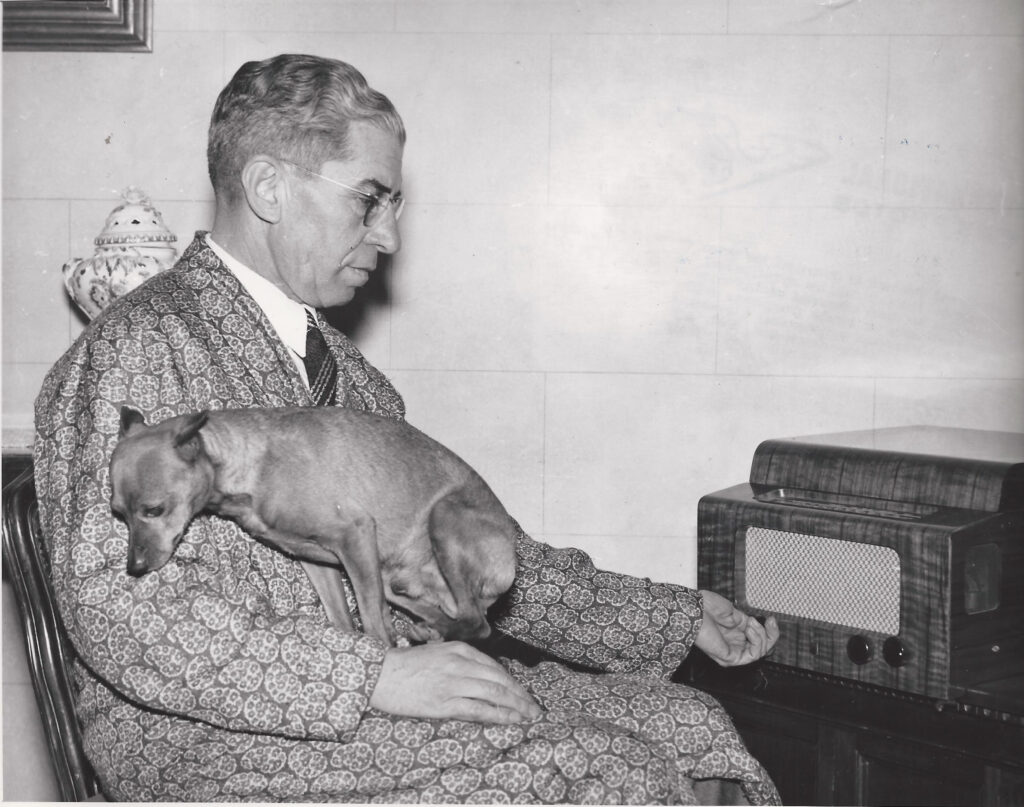
After his early release from prison and subsequent deportation in 1946, Charles “Lucky” Luciano struggled to find a new home. He tried to start anew in Havana, Cuba, but the U.S. government threatened to withdraw shipments of medicine unless the Cuban government got rid of him. His next stop was Rome, but he was banished from the city in 1949 because of a drug trafficking investigation. He and his paramour, former ballet dancer Igea Lissoni, finally settled down — for good this time — in Naples.
In 1952, Luciano and Lissoni had moved into a six-room apartment that was modest for a former Mob boss. Surveillance from the Italian police made it difficult to fight boredom in his semi-retirement. One thing that did occupy his time were two miniature pinschers and a Lakeland terrier.
“Igea once told a reporter how both children and animals like Lucky,” says Mob historian Christian Cipollini. With no children of his own, his canines became the objects of his affection.
“The one-time boss of the vice racket, believe it or not, talks baby talk to the pet miniature pinscher he calls ‘Bambi,’” wrote journalist Llewellyn Miller in The American Weekly after a 1952 interview with Luciano. Miller reported that said baby talk included phrases such as: “Whose dog are you?” “Are you a good dog?” “Do you wanna go ride?” Luciano doted on his other dogs too, but Bambi (pronounced “Bombi”) is the only one known by name.
In 1996, seasoned gangster film actor Marc Lawrence recalled running into Luciano walking Bambi in Rome. “I laughed and asked him if the dog was named after the Disney movie,” Lawrence said in a radio interview. “Luciano says, ‘Yeah, I like fairy tales.’”
4. Cleo, lion – “Crazy Joe” Gallo
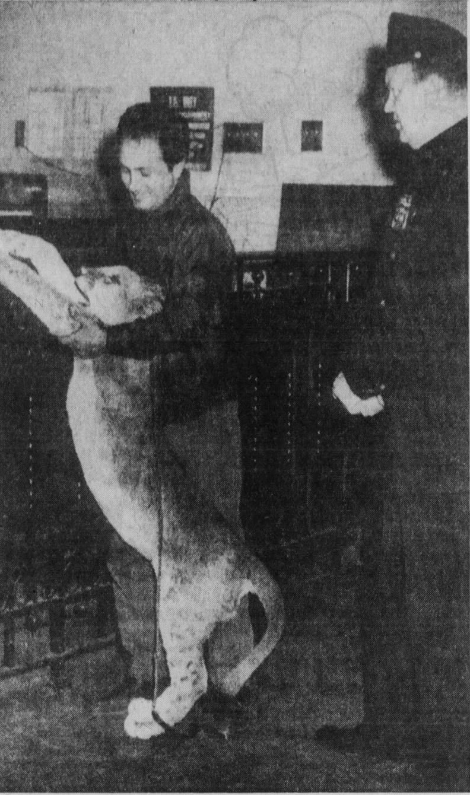
“Crazy Joe” Gallo would drag his delinquent debtors to the cellar door of his crew’s hangout, where the non-payer would hear a chain rattling, followed by a menacing growl. Failure to pay up meant an encounter with the creature lurking within. Behind the door was a hungry lion cub named Cleo, barely old enough to produce a baritone roar, who posed little threat. Cleo was just expressing his enthusiasm about a raw steak dinner, but the debtors didn’t need to know that.
Gallo earned his nickname from his ruthless loansharking antics and a psychiatric diagnosis of paranoid schizophrenia. His eccentric persona inspired the character “Kid Sally” Palumbo, played by Jerry Orbach in the 1971 comedy The Gang That Couldn’t Shoot Straight, which also featured a pet lion. Threatening debtors with an apex predator fit right into Gallo’s modus operandi.
According to former Gallo crew member Frank DiMatteo, Larry and Joe Gallo bought a lion cub from an exotic pet dealer in Manhattan (from whom they also bought a monkey). They kept it in the basement of a social club owned by Armando Illiano, a Gallo associate with dwarfism. Illiano could be seen on occasion taking Cleo out for walks.
On November 18, 1960, Gallo associate Anthony Ortolano was stopped by a patrol officer, who was surprised to see a lion in the backseat. Ortolano claimed ownership of the big cat and was charged with harboring a dangerous animal. The connection between Ortolano’s Cleo and the lion mentioned on the Gallo brothers’ wiretaps wasn’t discovered until later.
Cleo was sent to an ASPCA shelter and eventually found a new home in Fairlawn, New Jersey, at Bob Dietch’s Kiddie Zoo alongside 14 other lions and tigers. The staff changed his name to “Buster,” and he did well in his new home. In 1961, the New York Daily News spoke with the zookeeper, who reported that “Buster is a friendly lion and that he often plays with him.”
3. Bruiser, shih tzu – Meyer Lansky
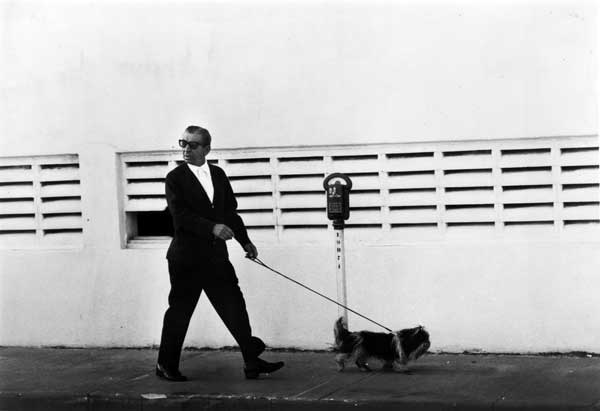
Twice a day, Meyer Lansky could be seen walking a brown and white shih tzu named Bruiser down the road outside his Miami home. A careful observer might notice FBI agents or paparazzi secretly snapping photos during his daily outings.
Before Bruiser, Lansky was not much of an animal lover. His first wife, Anne, adopted a bulldog and a fox terrier for their children in the 1930s, but according to Lansky biographer Robert Lacey, Meyer hated the dogs. In 1966, his second wife, Teddy, adopted a blond shih tzu named Tiger, for whom he had a similar disdain. When Tiger died unexpectedly two years later, Teddy was devastated. Her sympathetic husband adopted for her another shih tzu, this time naming the dog himself, Bruiser (Lacey spells it as “Bruzzer,” but Sandra Lansky, his daughter, and Gary Rapoport, his grandson, both confirm the spelling as “Bruiser”).
Lansky and the puppy had an immediate connection. “He really took a liking to this dog,” Lansky’s son Buddy told Lacey. “In fact, he took it away from her.” Dog walks became a part of his daily routine. In 1970, Bruiser accompanied the Lanskys during their brief sojourn in Israel until Meyer was deported back to the United States in 1972. At a time when it seemed the world was against him, Bruiser’s loyalty never wavered.
Lansky’s health began to decline in 1980 when he was diagnosed with lung cancer. Then, in 1981, Bruiser died at the old age — for a shih tzu — of 13. The Lanskys held an open casket funeral for Bruiser and laid him to rest in a plot alongside Tiger at the Pet Heaven Cemetery in Miami. A bronze plaque beside their graves reads, “Too well loved to ever be forgotten – The Lanskys.”
Lansky himself died not too long after in January 1983. “Bruiser’s death seemed to sap Daddy of his will to go on,” Sandra Lansky wrote in her memoir.
2. Vanessa, hippo – Pablo Escobar
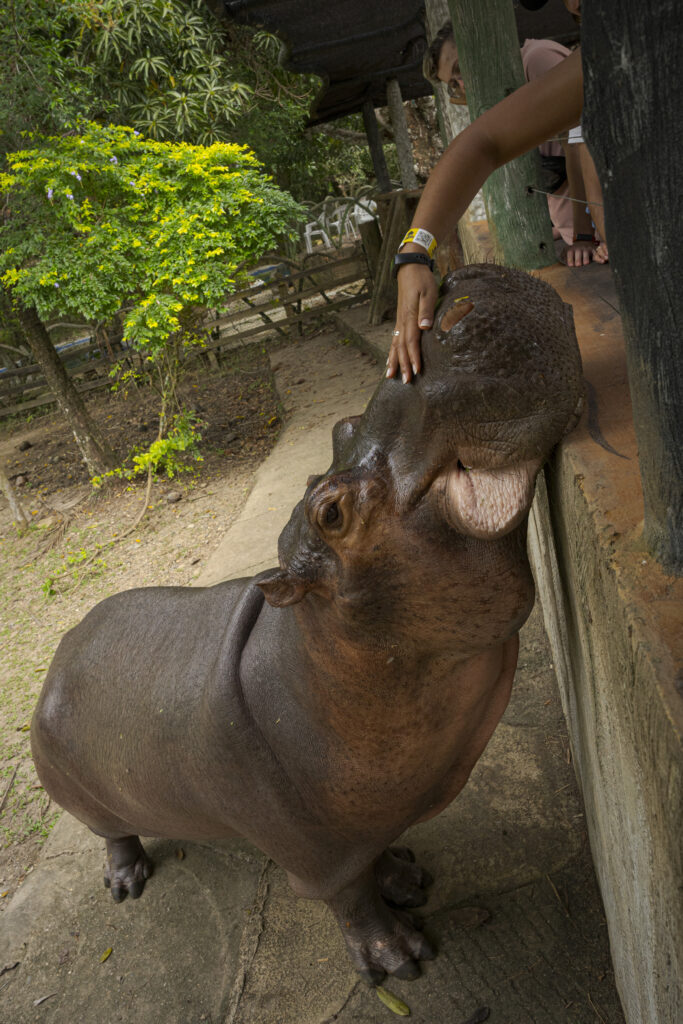
On the grounds of Hacienda Nápoles, Pablo Escobar’s lavish estate east of Medellín, Colombia, wanders a young, lone hippo. Her name is Vanessa, and she was abandoned by her herd for unknown reasons. Now a theme park and zoo, Hacienda Nápoles has become a tourist attraction with dozens of semi-captive hippos. The park adopted Vanessa as its mascot. Park staffers say she loves to play with branches and other objects and responds to her name.
Vanessa is a descendant of the original four hippopotami that Pablo Escobar imported to Colombia for his private zoo. Altogether he acquired about 1,200 exotic animals, including elephants, giraffes, a soccer-playing kangaroo and four hippos — one male and three females.
After Escobar was killed in 1993, most of the animals were shipped off to zoos. But the hippos, weighing at least 2,900 pounds apiece, were deemed too difficult to move and left to roam the grounds of Hacienda Nápoles. The bull hippo and his harem of three soon began to reproduce. In 10 years, the herd had grown to 10, and now, in 2024, there are about 170 hippos. Some remained in Hacienda Nápoles, while others escaped and live in the nearby Magdalena River basin.
The environment in Colombia, it turns out, is better suited for a hippopotamus than sub-Saharan Africa. With ample vegetation, plentiful rainfall and few predators, Escobar’s hippos are thriving. In Africa, female hippos begin to reproduce at age 9, but in Colombia it’s as low as three years old.
In 2009, a bull hippo named Pepe (the subject of a 2024 docudrama) escaped from Hacienda Nápoles, and a Colombian environmental agency ordered him killed. After two professional hunters shot him, local soldiers saw the dead hippo as a photo op. The published photo outraged the public so much that Colombian officials had to find other ways to cull the herd.
Sterilization is a viable alternative, but in a mating system where one bull can have a harem of 20 cows, total male sterilization is necessary. Yet capturing a four-ton bull hippo and transporting him to a proper facility is as difficult as it is expensive.
Locals have mixed feelings about their new wildlife. The hippos have become a tourist attraction that boosts the local economy. On the other hand, territorial hippos can be dangerous to humans, they are displacing native wildlife such as the capybara, and their excrement is changing the chemistry of the Magdalena River. If the population growth can’t be curbed, there could be more than 1,000 hippos by 2050.
1. Highball, German shepherd – John May
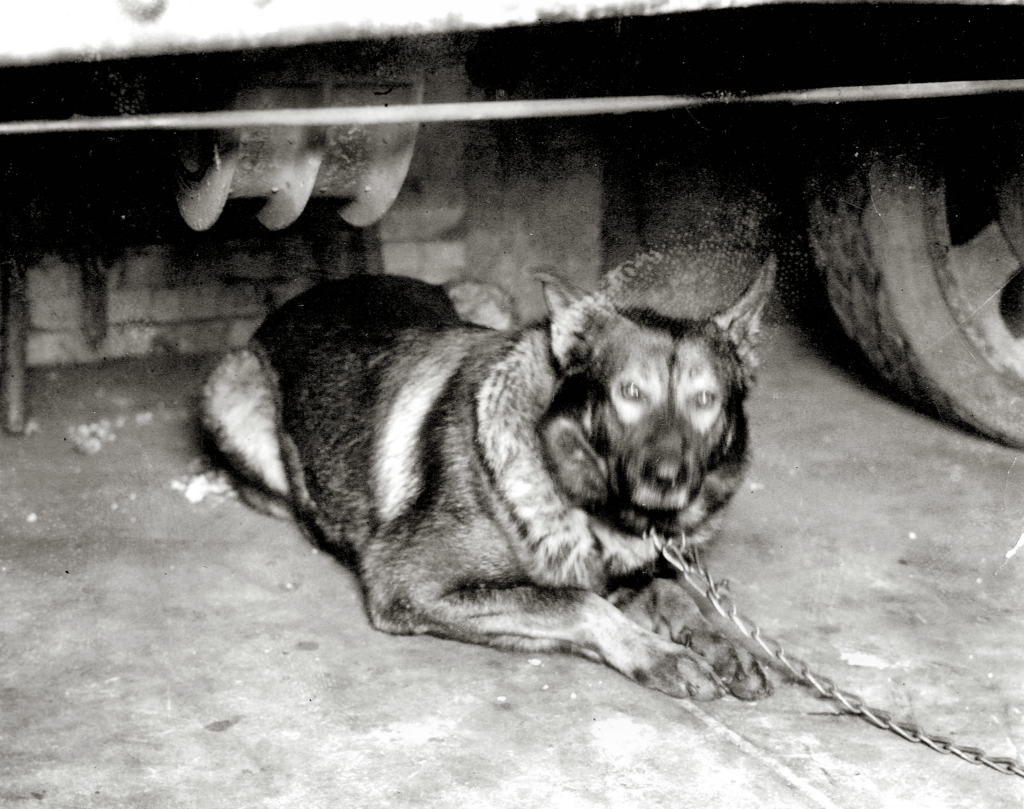
On February 14, 1929, seven men were gunned down in a garage on Chicago’s North Side in what came to be known as the St. Valentine’s Day Massacre. The only victim who could share what happened, Frank Gusenberg, died three hours later in a hospital bed.
Yet there was another eyewitness, leashed to the axle of a truck, a German shepherd named Highball. Highball belonged to one of the victims, John May, an auto mechanic who did jobs for the North Side Gang to provide for his wife and seven children. Highball’s traumatized wailings are what alerted neighbors that something terrible had happened.
At the time, Highball’s breed was called “Alsatian wolf dog.” Along with sauerkraut and frankfurter, the name “German shepherd” had fallen out of favor because of Germany’s antagonistic relationship with the Allied powers. The UK Kennel Club reinstated the original term for the breed in 1977.
Information about Highball is sometimes contradictory. The Cook County coroner, Herman Bundesen, believed the dog was named Fritz and belonged to Albert Weinshenk, the North Side Gang’s business operator and a victim of the Massacre. One of the photographers at the scene, Russell V. Hamm, wrote that Highball was locked in the cab of the truck, not chained to the axle.
There are also conflicting accounts of what ultimately happened to Highball. Photographer John “Hack” Miller wrote, “I got the police dog. I had him for a couple of years, then they stole him back from me.” In a letter to John Faber, a historian for the National Press Photographers Association, Hamm disputed Miller’s account, “As for Hack Miller, he did not take the so called Pupy home … the dog was raving mad and was destroyed.” Most historians side with Hamm, that Highball was so traumatized that he had to be put down.
What we do know for sure is that Highball was witness to the carnage that took place that day. Regardless of his fate, he has been immortalized as the only truly innocent victim of the St. Valentine’s Day Massacre.
Feedback or questions? Email blog@themobmuseum.org





